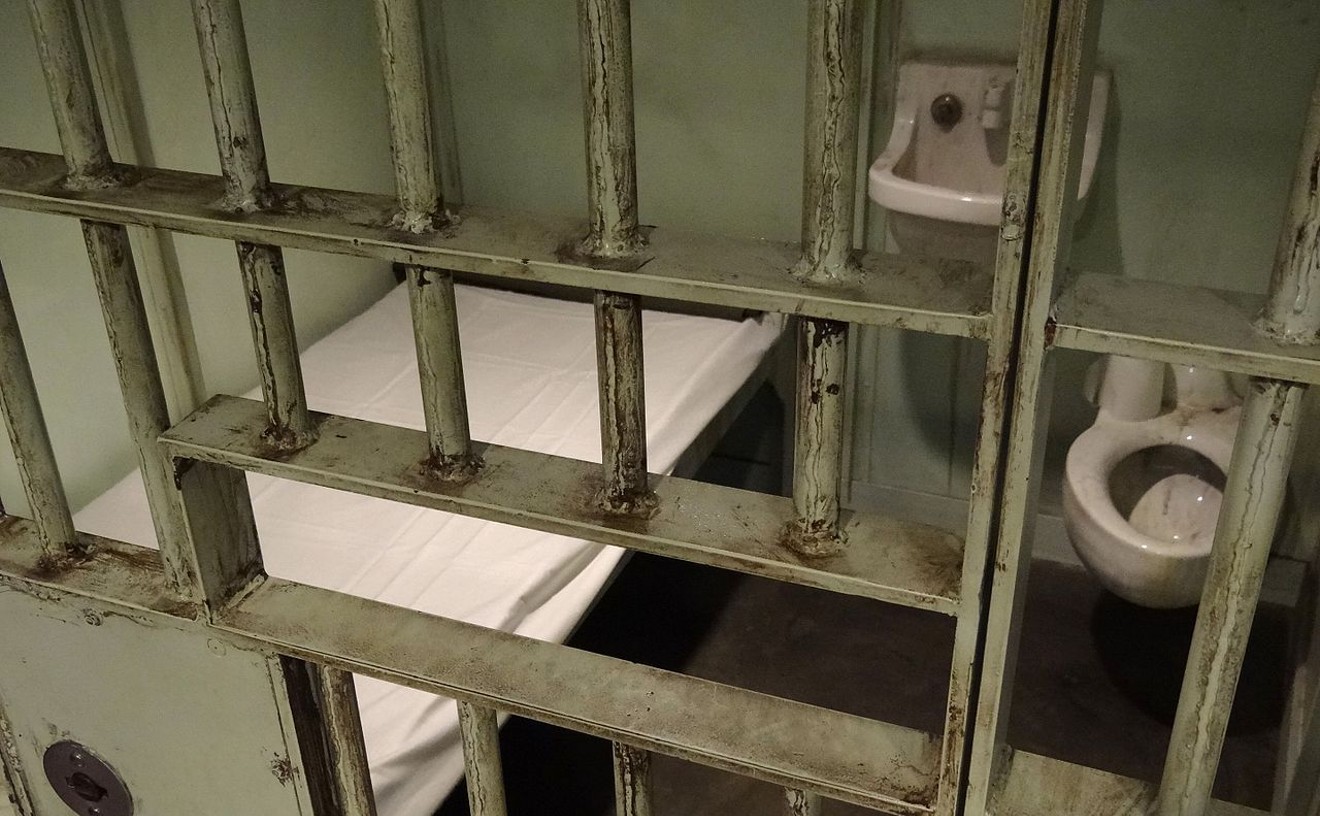Look, I don't have an MBA from the Wharton School. Everything I learned about finance, both public and private, I learned riding the Woodward Avenue bus to work in downtown Detroit.
There was always at least one card game on the back bench of the Woodward Avenue bus during rush hour. Up around the middle of the bus, guys played the shell game--the real thing--with pieces of cardboard balanced on their knees, walnut shells and dried peas. This was back when con men still had pride of craft. And then up toward the front, people sold drugs.
Over time and with effort, even a slow student like myself could learn a few basic principles of Woodward Avenue Bus Finance. For example, one very important rule: Never ever under any circumstances, no matter how amazingly sweet the deal, buy a diamond on the Woodward Avenue bus.
Another rule: Strangers never really want to give us their money. It's a trick. And here is the rule that took me the longest to master: Never play the other man's game.
In 1998, when the city borrowed $246 million to pay for the Trinity River plan (which you and I have to pay back), Mayor Ron Kirk said we would get a beautiful lake downtown that we could go sailing on, with fancy restaurants and parks all around it. The brochure for the bond campaign said: "If you've ever taken a stroll down San Antonio's bustling Riverwalk, sat by a lake in New York's beautiful Central Park or driven along Austin's scenic Town Lake, then you know how valuable these recreational areas are to the city."
Today at this briefing, they have the same kind of picture up on the wall: sailboats at a dock next to a municipal boathouse next to a long promenade beneath dramatic steps leading up to an amphitheater next to a thing that looks like a band shell or maybe a casino or a nightclub.
But I'm also looking at Slide No. 54, which they sort of shuffled by in a hurry in their PowerPoint presentation. I have a copy of it here in the briefing papers. It shows that the money they said they were going to spend on the lake and parks when they briefed the council on it last March was $48.3 million. Now at this briefing, preparing for next month when the council will commit to dollars and cents, they are talking about spending $15.9 million on the lake.
Huh? How can you cut the money for the lake and parks to a third when you have to build all those casinos and amphitheaters and promenades and jazz like that? Oh, it begins to dawn: They're not really going to do any of that. But why?
One council member, Gary Griffith, looks up at the picture on the wall and asks a few questions: "I don't believe, when we finish, we are going to have the promenade in basic phase one," Griffith says very politely. "We are not, is that correct? So that picture you are showing there, you would have to chop off the bottom part?"
The consultant says: "You would see that the bottom, rather than having this kind of a wide pedestrian promenade with the railings and the landscaping and all, you would have a very simple path."
Wait, wait, wait. Mentally, I'm back on the Woodward Avenue bus. A path? Don't talk for a second: Did you say a path?
Because, see, I can't tell you how important this is to me. I'm a simple person. I didn't go to Wharton. I still remember getting clipped pretty bad on the Woodward Avenue bus a few times, and it still stings, and I'm breathing kind of hard here. Trying to sort things out. I see a picture on the wall of sailboats and docks and boathouses. It looks like Paris and Vegas and San Francisco all rolled together. But what they said just now: They said it's a path?
No. No. In 1998 when they asked me to vote for this, they did not say a path.
What they are calling for now is an isolated mud hole walled by a roaring, stinking freeway, filled with stagnant water, snakes and mosquitoes. If this plan is allowed to go ahead the way they are talking about at this briefing, the idea of a beautiful park downtown will be dead forever.
Which is what the road hustlers want. The park is in their road. Let me tell you exactly what this plan really is: This is a plan to kill once and for all the concept of a Trinity River park and put the money instead in the new highway.
Slide No. 54 again, please! Last March when they were still diddling us on this, they said the road portion of the plan would cost $535 million. Now, eight months later, they say the road part will cost $786.6 million. Wow. It went up $251.6 million in eight months! Annualized, I believe that would make an inflation factor of 71 percent.
Well, just a second. Let's take a closer look at Slide No. 54. Turn back again, OK? Oops, hey, what's this? Never saw that on the list before: $80 million to rebuild Industrial Boulevard through the Trinity industrial district, where all the road pushers own their land. That wasn't here at all last March. The assistant city managers explain at the briefing that they just sort of realized recently we need to do that.
Oh, puhleeeease! They just now noticed that they have to spend $80 million redoing Industrial Boulevard? This town is famous, infamous, notorious for having terrible cracked-up potholed streets all over town. I thought that was the issue that made Laura Miller mayor. The city's total budget this year for streets and thoroughfares, with money drawn from three prior bond campaigns, federal funds and other sources, is $194 million. And in just the past few months they sort of looked up and noticed that we need to spend $80 million lavishly refurbishing a crapped-out backwater thoroughfare in a crumbling 1950s warehouse district that virtually no serious big-box shippers even use anymore?
I'm sitting here, and I am telling myself in the very sternest tones possible that it's their shell and their pea and their cardboard, and this is my lunch money. I still have my lunch money, right? OK. I must not play their game.
But I have to check out just one more thing about the shells. The $16 million they now say they are going to spend on the lake is actually for all kinds of things that are not the lake, like "gateway parks" and "Elm Fork Levee improvements." So we voted in 1998 for $31.5 million for the lake. How much money--American greenback cash--is actually going into the lake now?
That's on Slide No. 26. It's $1.6 million. Put me in the damn game! I'm not getting off this bus until I see what's under that shell right there! After the briefing, I call Rebecca Dugger, the city employee who is director of the Trinity River Corridor Project, and I ask her how the city possibly can build a $31.5 million lake for $1.6 million.
And, oh, those shells start their magical hummin' and singin': Dugger tells me on the phone that digging the lake will be cheap because the city has a deal to sell the dirt from the lake to the U.S. Army Corps of Engineers so that the corps can use it for making the river levee embankments higher downtown to add more flood protection.
"They will do it with dirt out of our lake," she says, "so raising the levees helps us build our lake. So that's how we are able to put money...we are going to build our lake, we are going to use some of this money to dig out our lake, and then we're going to turn around and give this dirt to the corps, so that's our contribution to raising the levee."
Time out!!! I call the Corps of Engineers in Fort Worth. They tell me they don't have a project to raise the levees in downtown Dallas. They don't have any authorization from Congress to do a project like that. They haven't asked for any authorization. They say they can't ask for such an authorization before 2007.
Later, Dugger and Chief Assistant City Manager Mary Suhm show me numbers to prove, they say, that no money has been taken out of the lake. I feel like they're selling me a time-share. I keep thinking, "The picture doesn't show a path."
I'm watching these shells, and I'm listening to the sing-song of the bus wheels, and I'm starting to nod: Gonna pay for the lake with the levees and the levees with the dirt and the dirt with the money from the money for the lake and the money for the lake is the money from the levee, but the levee's not ready, so you find the pea!
Stop! Don't play! Where's the lake?
Where is the lake with the sailboats and the promenades and the parks and the stuff they showed us when they asked us to foot the bill? Point to the picture. Point, point, point: Where is that lake? That lake right there. Not a mud hole. The lake in the picture. Because if they don't make that lake in the picture with the money we voted for, then...I have to get off the bus.
Hey! I thought you said I still had my lunch money!











